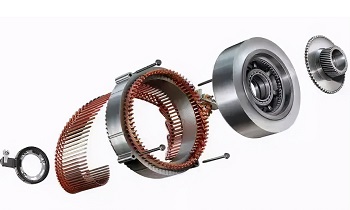The biggest risk in the use of permanent magnet motors is demagnetization caused by high temperature. As we all know, the key component of permanent magnet motors is neodymium magnet, and neodymium magnet is most afraid of high temperature. It will gradually demagnetize under high temperature for a long time. The higher the temperature, the greater the risk of demagnetization.
Once a permanent magnet motor loses its magnetism, you basically have no choice but to replace the motor, and the cost of repair is huge. How do you determine whether a permanent magnet motor has lost its magnetism?
1. When the machine starts running, the current is normal. After a period of time, the current becomes larger. After a long time, the inverter will be reported to be overloaded.
First, you need to make sure that the inverter selected by the air compressor manufacturer is correct, and then confirm whether the parameters in the inverter have been changed. If there are no problems with both, you need to judge by back electromotive force, disconnect the head from the motor, perform no-load identification, and run no-load to the rated frequency. At this time, the output voltage is the back electromotive force. If it is lower than the back electromotive force on the motor nameplate by more than 50V, it can be determined that the motor is demagnetized.

2. After demagnetization, the running current of permanent magnet motor will generally exceed the rated value.
Those situations where overload is reported only at low or high speed or occasionally reported, are generally not caused by demagnetization.
3. It takes a certain amount of time for a permanent magnet motor to demagnetize, sometimes several months or even one or two years.
If the manufacturer selects the wrong model and causes current overload, it does not belong to motor demagnetization.
An important indicator of permanent magnet motor performance is the high temperature resistance level. If the temperature resistance level is exceeded, the magnetic flux density will drop sharply. The high temperature resistance level can be divided into: N series, resistant to more than 80℃; H series, resistant to 120℃; SH series, resistant to more than 150℃.
Copyright @2024 Nanjing Huajin Magnet Co., Ltd. All Rights Reserved.
Sitemap
/ Blog
/ Xml
/ Privacy Policy
 Network Supported
Network Supported
